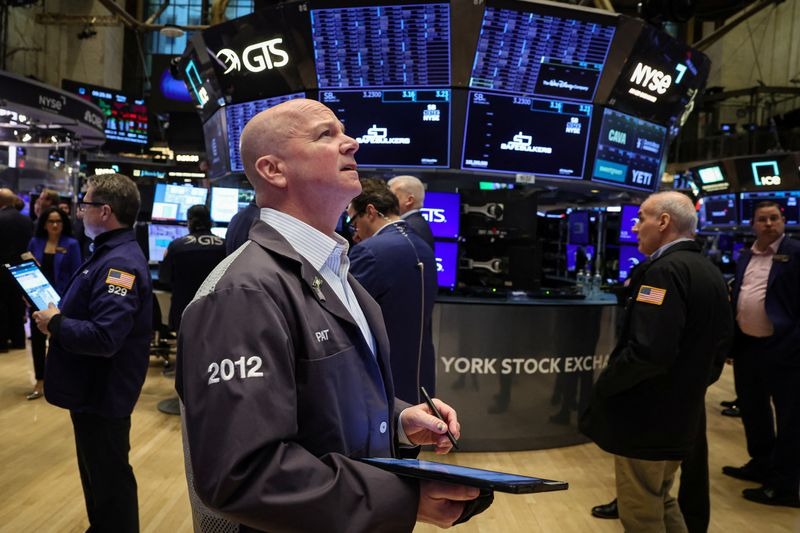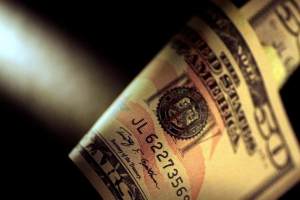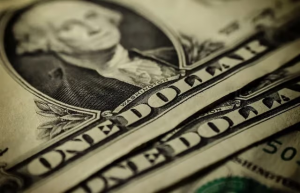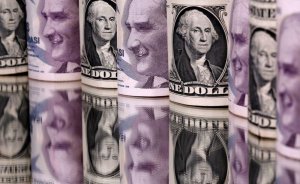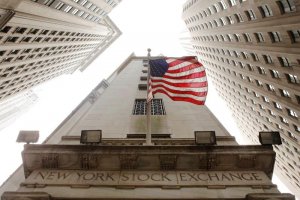U.S. stock futures rise on Tuesday after a whipsaw session to begin the trading week, with uncertainty looming over the impact and outlook of President Donald Trump’s tariffs. Stocks in Asia rebound modestly, as China vows to "fight to the end" if Trump moves ahead with his additional levies on the country. Investors will be keeping an eye on a Senate testimony from U.S. Trade Representative Jamieson Greer, who is reportedly due to say that several countries have approached the White House ready to negotiate on tariffs.
1. Futures higher
U.S. stock futures pointed higher after a bout of heavy volatility in the prior session, as uncertainty lingered around the future trajectory of Trump’s tariff agenda.
By 03:38 ET (07:38 GMT), the Dow futures contract had gained 790 points or 2.1%, S&P 500 futures had increased by 93 points or 1.8%, and Nasdaq 100 futures had risen by 302 points or 1.7%.
Underpinning the ructions on Monday was a report -- eventually deemed to be false -- that the Trump administration was considering a reprieve from the tariffs. The White House later doubled down on the policy, although stocks were largely able to weather the swift flow of news and rumors.
The blue-chip Dow Jones Industrial Average and benchmark S&P 500 both finished modestly lower following the rollercoaster trading activity, while the tech-heavy Nasdaq Composite edged up by 0.1%. Tariff-fueled swings in stocks led to a surge in the VIX, widely known as Wall Street’s fear gauge, to levels not seen since the COVID-19 pandemic sparked a sell-off in March 2020.
While not stellar, the relative bounce in stocks marked somewhat of a respite after a 10% slump in the prior two sessions.
Still, investors remained wary that the pressure from Trump’s tariffs, which include a minimum 10% for all U.S. imports and targeted rates of up to 50%, is not likely to fade soon. Leading figures on Wall Street, such as J.P. Morgan Chase CEO Jamie Dimon, have also warned that the negative effects of the tariffs may expand "cumulatively over time and would be hard to reverse."
Analysts have said the levies could weigh on broader U.S. growth, depending on how long they stay in effect for.
"This is a possible tipping point for the U.S. economy, where the fear of a recession was beginning to rise anyway," said Marieke Blom, Chief Economist at ING, in a note.
2. Asian stocks rebound
Asian stock markets staged a modest recovery on Tuesday, rebounding from the previous session’s steep losses driven by the escalating global trade tensions.
Most regional stock indices logged sharp gains helped by an overnight bounce back in U.S. technology stocks, while some dip-buyers emerged after three days of sharp declines.
However, sentiment stayed cautious, particularly after Trump on Monday threatened more tariffs on China in response to pledged retaliatory duties from Beijing.
Trump said he would increase tariffs on Chinese imports by 50%, unless Beijing retracts an earlier tariff hike on U.S. goods. On Tuesday, China vowed to "fight to the end" if Trump moves ahead with his additional levies.
Elsewhere, the executive arm of the European Union has proposed its own countermeasures on a slew of U.S. goods such as soybeans, nuts and sausages -- although Reuters reported that previously-suggested tariffs on goods like bourbon whiskey have been omitted from the bloc’s latest list. EU members are expected to vote on the plans on Wednesday.
EU Trade Commissioner Maros Sefcovic has also said that EU officials are ready to negotiate "zero-for-zero" tariffs with the U.S. in order to "find a mutually acceptable compromise."
European equity indices traded higher Tuesday, rebounding from a four-day losing streak.
3. Greer testimony ahead
U.S. Trade Representative Jamieson Greer is due to tell the Senate Finance Committee on Tuesday that he has been approached by almost 50 countries asking to discuss Trump’s sweeping tariffs, according to media reports.
Greer will say in written testimony that several of these countries, like Argentina, Vietnam, and Israel, have suggested they will bring down their tariffs and non-tariff barriers, Reuters reported.
The statement is set to come as markets are still attempting to understand if the Trump administration plans to impose the tariffs permanently or use them as a cudgle during negotiations with trading partners. On Monday, Trump said "both can be true."
Over the weekend, U.S. National Economic Council Director Kevin Hassett suggested that more nations had reached out to the White House about forging a possible deal.
"The White House is trying to pivot a bit in its tariff messaging away from permanency and toward negotiations, a sentiment Greer may echo on Tuesday, but investors aren’t falling for the bait after everything that’s happened," analysts at Vital Knowledge said in a note.
4. Elon Musk appealed to Trump to reverse tariffs - Washington Post
Elon Musk, the world’s richest man and a key White House advisor, appealed directly to Trump to reduce the severity of his trade tariffs, the Washington Post reported on Monday.
Musk had personally come to Trump with his case, but was ultimately unsuccessful in changing his mind, the Washington Post report said, citing two people familiar with the discussions.
Musk’s companies, specifically Tesla (NASDAQ:TSLA), stand to be impacted by the tariffs. While Tesla does manufacture all of its U.S.-sold cars domestically, it still imports several components from China and other countries targeted by Trump’s tariffs.
Musk previously criticized top White House trade advisor Pete Navarro in a series of social media posts and called for a free trade zone between the U.S. and Europe.
5. Oil choppy
Oil prices wavered around the flatline on Tuesday following a prolonged sell-off on fears the Trump administration’s tariffs would result in a global recession, hitting demand for crude.
At 03:39 ET, Brent futures dipped 0.3% to $64.05 a barrel. U.S. West Texas Intermediate crude futures dropped 0.3% to $60.53 a barrel.
Both contracts have tumbled by over 14% since Trump’s April 2 announcement of tariffs on all imports, but have recouped some of those losses in a relief rally.
Meanwhile, the U.S. dollar index, which tracks the greenback against a basket of rival currencies, inched lower, while Bitcoin rose, bouncing back from around five-month lows.

